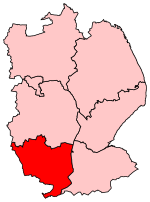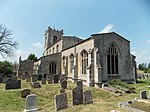Irnham
Civil parishes in LincolnshireSouth Kesteven DistrictUse British English from February 2014Villages in Lincolnshire

Irnham is a village and civil parish in South Kesteven, Lincolnshire, England. It is situated approximately 10 miles (16 km) south-east from Grantham. To the north is Ingoldsby and to the south-west, Corby Glen. The village is on a high limestone ridge that forms part of the Kesteven Uplands. The civil parish of Irnham includes the hamlets of Bulby and Hawthorpe. The similar extent ecclesiastical parish is Irnham, part of the Beltisloe rural deanery in the Diocese of Lincoln, and part of a Group which includes Corby Glen and Swayfield, sharing a single priest. The parish church is dedicated to St Andrew.
Excerpt from the Wikipedia article Irnham (License: CC BY-SA 3.0, Authors, Images).Irnham
South Kesteven Irnham
Geographical coordinates (GPS) Address Nearby Places Show on map
Geographical coordinates (GPS)
| Latitude | Longitude |
|---|---|
| N 52.829 ° | E -0.481 ° |
Address
NG33 4JG South Kesteven, Irnham
England, United Kingdom
Open on Google Maps











